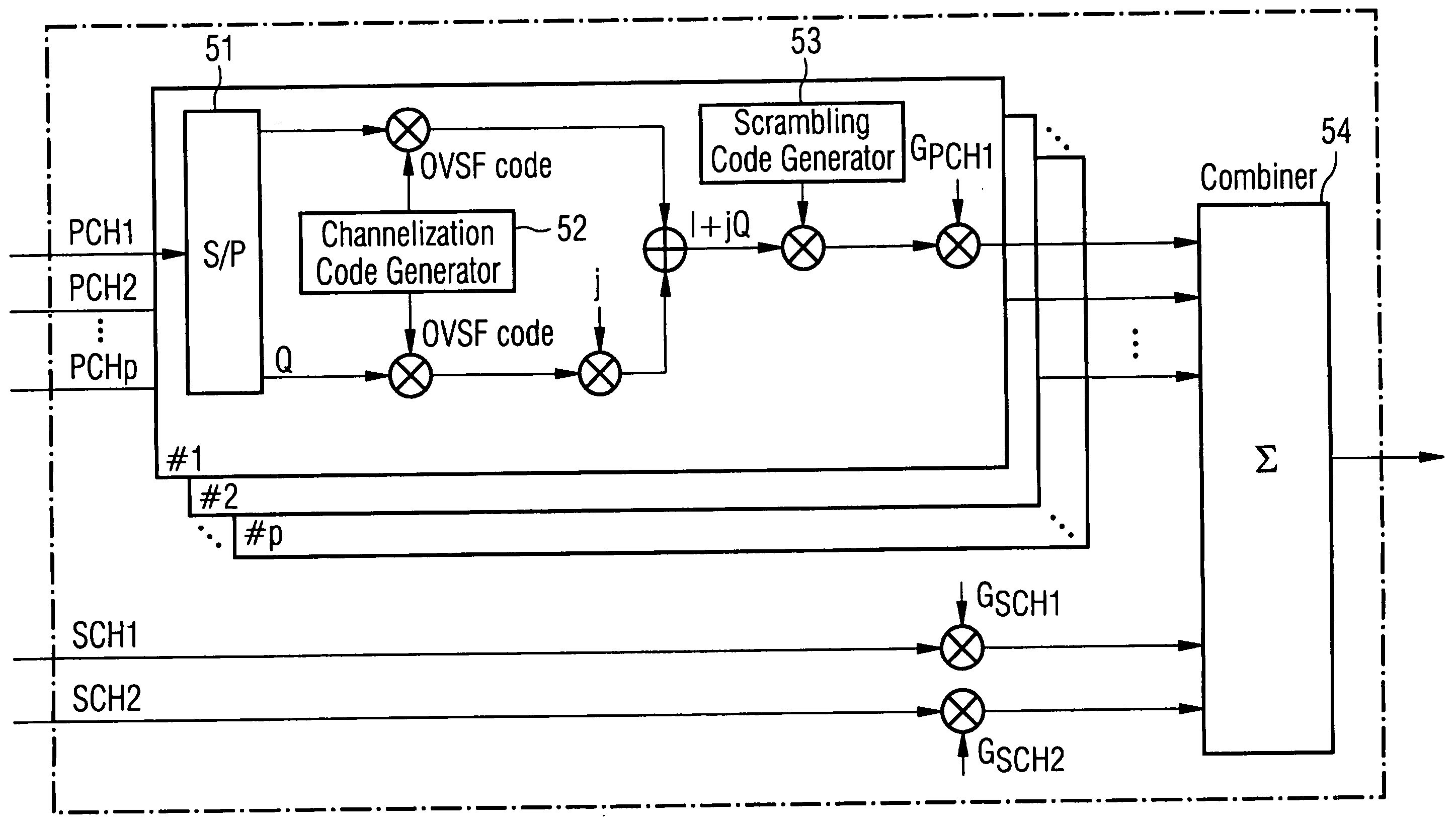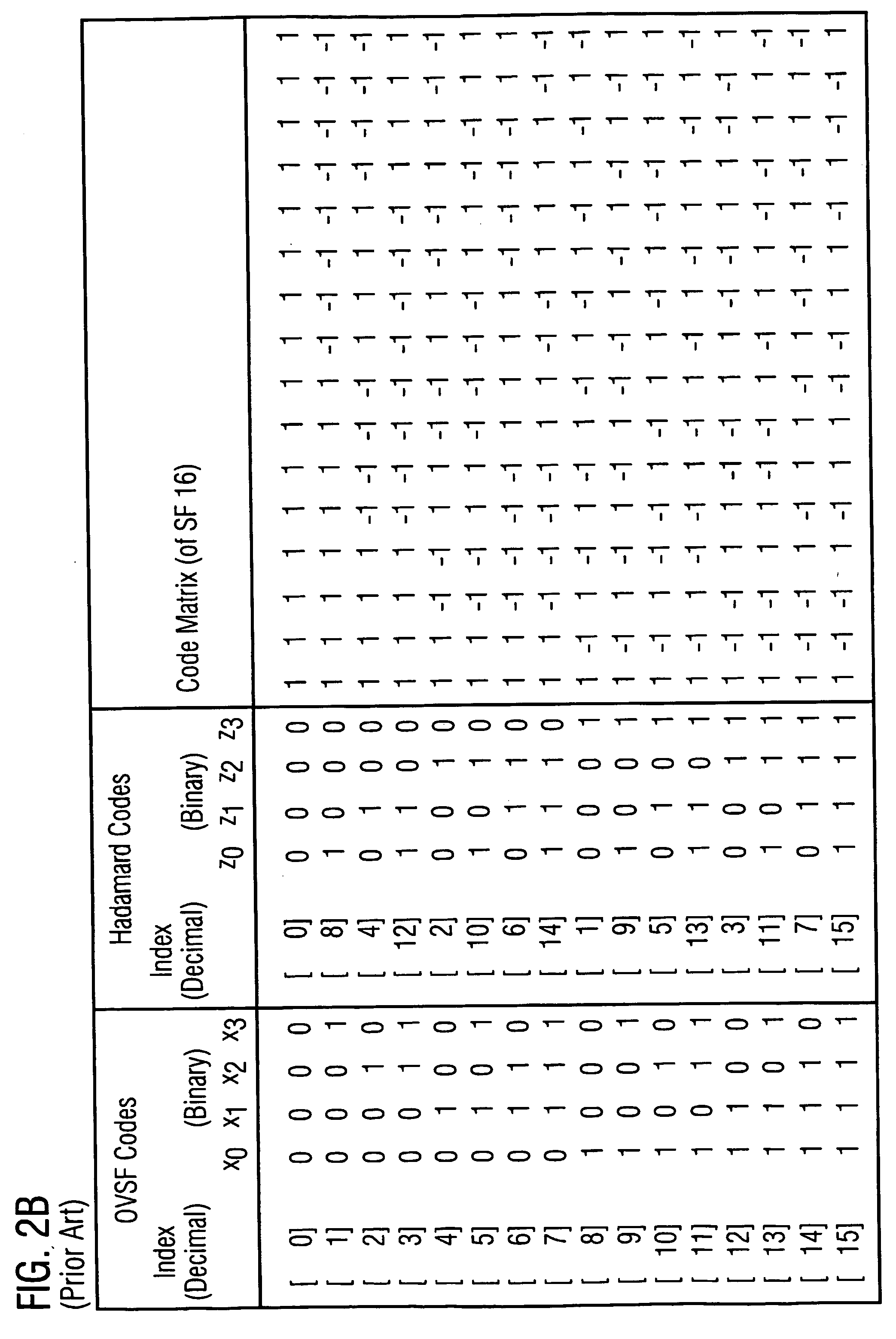Generation of orthogonal codes
- Summary
- Abstract
- Description
- Claims
- Application Information
AI Technical Summary
Benefits of technology
Problems solved by technology
Method used
Image
Examples
first embodiment
[0067]FIG. 6 shows a block diagram of a code generator 60 according to a first embodiment of the invention. Herein, the code to be generated (also referred to as the desired codeword) is identified by the spreading factor (length) SF and the index k, as described above with respect to the prior art. It is assumed that SF is selectable from values in the range SFmin≦SF≦SFmax, wherein SFmin and SFmax denote a minimum and a maximum spreading factor, respectively.
[0068] Optionally, the code generator 60 is configurable so as to generate a particular type of orthogonal code selected from a set of types including, e.g., OVSF, Hadamard, and Walsh codes. In this case, the desired type of the orthogonal code is indicated by an additional input, the mode signal m, as indicated by the dashed arrow in FIG. 6. Otherwise, the code generator 60 is suitable f or generating a single type of orthogonal code only and thus does not require a mode input.
[0069] Based on the inputs SF, k, and optionally...
second / third embodiment
Second / Third Embodiment
[0102]FIG. 9 shows a block diagram of a parallel code generator according to a second embodiment of the present invention. It is assumed that the parallel code generator 90 must be capable of generating, in the same period of time (i.e concurrently / simultaneously), a total of p>1 codewords. It should be noted that p may assume rather high values. For example, in different UMTS projects run by the applicant, p has a value of 1194 and 1636, respectively. Each codeword is identified by a spreading factor SFq, an index kq, and an optional mode signal mq indicating the desired type of code (OVSF / Hadamard / Walsh etc.). wherein q=1, 2, . . . , p. Let SFmax=2N denote the maximum spreading factor (maximum length) of all codes to be generated, i.e.
SFq≦SFmax for q=1, 2, . . . , p.
[0103] As can be seen from FIG. 9, a set of p code generators 90-1, 90-2, . . . , 90-p is provided, wherein each code generator includes an index conversion unit 91-q as well as a logic unit 92...
PUM
 Login to View More
Login to View More Abstract
Description
Claims
Application Information
 Login to View More
Login to View More - R&D
- Intellectual Property
- Life Sciences
- Materials
- Tech Scout
- Unparalleled Data Quality
- Higher Quality Content
- 60% Fewer Hallucinations
Browse by: Latest US Patents, China's latest patents, Technical Efficacy Thesaurus, Application Domain, Technology Topic, Popular Technical Reports.
© 2025 PatSnap. All rights reserved.Legal|Privacy policy|Modern Slavery Act Transparency Statement|Sitemap|About US| Contact US: help@patsnap.com



